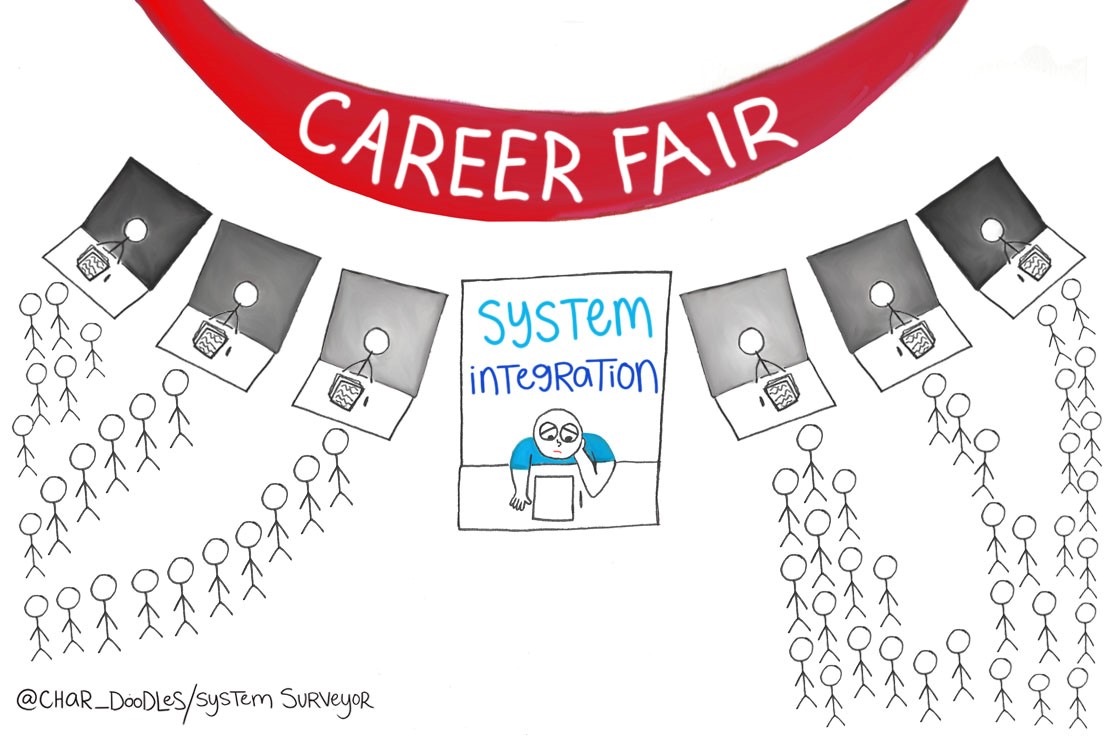Will System Integration Growth Be Stymied by the Workforce Gap?
Hiring talent has become an acute challenge faced by system integrators. According to the “SDM 2019 Security Industry Forecast,” nearly 30% of system integrators said that finding and retaining employees was their biggest challenge. Likewise, Security Sales & Integration’s 2019 Gold Book reported that the number one concerns of integrators is the lack of technicians. Why is this a problem for system integrators and what happens if they don’t address it? What can they pragmatically do to address it in 2019?
The System Integration market is predicted to grow by 12% in 2019. The talent gap represents a problem because business leaders are concerned whether or not they can serve the growth adequately. If the workers are not available to grow a business and capitalize on the opportunity, it can stall the industry and the growth potential.
According to the “2018 NSCA Financial Analysis of the Industry,” nearly 50% of those polled said that finding and retaining talent was their largest pain point.
Common comments from the report:
- • “Staffing, including recruiting and hiring trained technical and sales staff to keep up with increased workload and replacement of retiring personnel.”
- • “Balancing the market demands for projects and our staffing to support them.”
- • “Filling staffing needs for experienced technicians and designers.”
3 Ways to Address the Talent Gap Problem
Let’s look at the three main opportunities to address talent gap: 1) the lack of awareness of the industry and opportunities, 2) employee attraction and retention, and 3) widening the net and ramping new employees to productivity faster.
1. The Awareness Gap & Lack of Skilled Talent
One of the primary reasons that it’s hard to hire for system integration businesses is that the industry isn’t on the radar of job seekers. Many young people aren’t aware of what system integration is in the first place or about the employment needs in the industry. This causes many IT and technology-oriented students to overlook the industry for other opportunities. So, how do system integrators combat this?
Several businesses and associations are conducting active outreach to high schools, vocational schools, and colleges and universities to close the awareness gap. ATI unveiled a paid internship to get IT students on board with learning about system integration. The program helps take an already tech savvy youth and helps them get into a successful career fast track.
Associations such as the NSCA created their Ignite initiative to help reach educators, students, and job seekers to find careers in system integration. The Ignite program acts as a portal for employers to find certified and trained new talent while simultaneously growing the talent pool. Chuck Wilson, NSCA’s executive director says, “Integrators now have all the tools necessary to approach school administrators and interested students at all levels.” Veterans are also a good opportunity to reach technical talent, read in a prior blog post.
2. Employee Attraction and Retention
Attracting Employees
For an industry centered around technology, system integrators may ironically be missing the opportunity to leverage technology as a means to attract and retain the best talent. Younger workers or “Millennials” are often digital natives, those who have not known life without being connected – they expect to work with the latest technology tools, mobile devices, and software. They want to integrate deep technology use in their work lives and are perplexed by some of the older, unproductive ways that have become norm for our industry.
Did you know that about 90% of system integrators send out personnel with a paper floor plan, mobile phone camera, and a spreadsheet or forms to capture site surveys and engage prospects early in the process? While most integrators report that they have mobile tablets like an iPad or Android tablet, they are being underutilized and lack relevant apps for use by field or other personnel.
As one example of embracing technology, integrators have found that using System Surveyor, an easy to use, mobile and field-friendly system design tool positions them as more innovative and professional with customers. The app works on mobile tablet allowing them to import a digital floor plan, capture and annotate images, and gather context-relevant information in real-time. It has several advantages including: making the employee look innovative and professional, saving hours of time putting information back together at the office for proposals, and faster sales.
Millennials are redefining work-life balance, and smart use of technology is central to attracting and retaining them. If your team is spending hours of their personal time to put proposals together – it may be a red flag that it needs attention.
In an increasingly digital world, system integrators must embrace change and new technologies if they want to attract new talent and grow.
Retention
The industry’s limited talent pool creates another pain point with employee retention. With labor in high demand, technicians can afford to move between companies to get better pay or to move up the chain. System integrators and technology managers are reportedly poaching each other’s talent leading to an arms race amongst integrators that creates an unhealthy environment all around.
So how do you decrease attrition amongst your employees when you’re dealing with a limited supply of labor? Place more value on them and give them the training and technology tools to succeed. It may sound too easy to be true, but it can go a long way in retaining employees and ensuring a good work-life balance can pay dividends.
3. Widening the Net and Ramping Employees to Productivity Faster
What if there was a wider talent pool to tap into in the first place? With more intelligent technology tools to use in the field, salespeople and account managers may not need a core skill set in engineering and expertise with CAD. Also, other technically-oriented resources could be brought up to speed faster about the integration industry without needing to accumulate decades of experience.
We’ve spoken to integrators who are able to now have their sales and account managers do some of the things that used to require engineers and technicians in the field. As one example, embracing a mobile tablet and System Surveyor, integrators are having their account managers and subcontractors walk a site survey with the ability to intelligently capture all of the customer technical requirements. It allows the engineering team to leverage their expertise across more proposals and gather consistent, accurate information as if they were on site. See testimonials from integrators on how this has impacted their business.
As an additional benefit, these technologies are improving customer confidence that their needs are understood and that their project is more likely to be done right the first time. Integrators also benefit from using technology as a means of building consultative value as a trusted advisor which increases their long-term customer value in an environment where hardware margins are tight.
What Actions to Take in 2019?
System integrators can address the talent gap challenge in the long run by evangelizing more about the excellent opportunities in the industry. In the near term, they can look carefully at how they can attract new talent by modernizing, creating a compelling place to work, and helping them feel professional and prepared in their jobs. The best companies in the world put talent and people first. It is a challenge the industry must address.
“Acquiring the right talent is the most important key to growth. Hiring was – and still is – the most important things we do,” Marc Bennioff, Founder, Chairman and CEO of Saleforce.com.

Maureen Carlson is co-founder and president of System Surveyor, the leading digital platform for physical-security site surveys and system design. With 25 + years in B2B SaaS and security technology, she leads the go-to-market and operations with a top notch team. Under her leadership, System Surveyor has grown into an industry-defining software used worldwide to streamline system design, enable collaboration, and raise the bar for security and technology professionals. Maureen enjoys building relationships in the industry and user community to build sustainable, high growth business. In her spare time in beautiful Austin, you’ll find her spending time outdoors, on a tennis court, reading or with family and friends.
